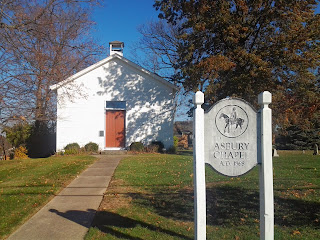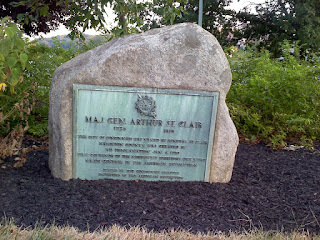Of the 27 geocaches I have hidden, 19 of them are history oriented. they are not difficult geocaches to find but more about the history of that immediate area. Consider them a teaching moment.
Earlier in 2013, I put out a series of eight hides along a paved walking and biking trail next to the Mill Creek in the Cincinnati neighborhood of Carthage. They are all titled after the Shawnee name of important Ohio Native American leaders in the 18th and 19th century that we know by their more commonly known name or English interpretation. Click on the links to get more info on each of them.
#1 Hokoleskwa - Cornstalk, Principle Shawnee Chief in the 1770s
#2 Cotawamago - Blackfish, Chalahgawtha Shawnee War Chief
#3 Catecahassa - Black Hoof, Mekoche Shawnee Civil Chief
#4 Weyapiersenwah - Blue Jacket, Shawnee War Chief
#5 Cheeseekau - Chiksika, older brother of Tecumseh and Kispoko Shawnee War Chief
#6 Tecumtha - Tecumseh, Shawnee born Confederacy Chief of multiple Native American tribes in the early 1800s
Maketewa Math - Shawnee Leader Bonus Cache - an easy math puzzle cache using Shawnee numbers
Maketewah - The Mill Creek
 |
| Asbury Historic Cemetery and Chapel |
Brethren Historic Cemetery
This cemetery has a section with headstones moved from another cemetery but they left the bodies behind.
Willsey Historic Cemetery
One of the many Colerain Township historical cemeteries.
Asbury Historic Cemetery and Chapel
I wasn't able to find much information about this old cemetery and chapel other than it dates back to 1836, the original chapel was destroyed in a storm and was rebuilt in 1868.
The rest of my historically based caches are near my home or work and highlight some overlooked events in the area you may not know about as you go speeding down busy modern roads.
 |
| Cache & Cary geocache with my Gehio Travel Bug |
Dr. I.M. Wise - The father of Reform Judaism in the US had a home near the plaque location. This is the same man who built the Plum Street Temple in downtown Cincinnati.
Splitting Linwood - An old neighborhood in Cincinnati split in two by a modern highway.
Wickerham's Mill - An 18th-century gristmill location along the Little Miami River.
Garard’s Station - 18th-century site of the first fortified settlement in Anderson Township.
The El Rancho Rankin Motel - The demolished infamous seedy and tacky motel site on Beechmont Ave.
Clough Cache - Clough Pike and Clough Creek (rhymes with ruff) in Anderson Township are named after a Revolutionary War Veteran named Richard Clough Anderson.
AndersEn with an E - My surname is AndersEn but I work in AndersOn. Just a little fun with the spelling and the origin of the name.
I also have one trackable item called a travel bug that is supposed to be moved from geocache to geocache but sadly the original disappeared in November 2012. Unfortunately, people lose them or take them. I keep hoping it will turn up again.Sometimes they do.









































